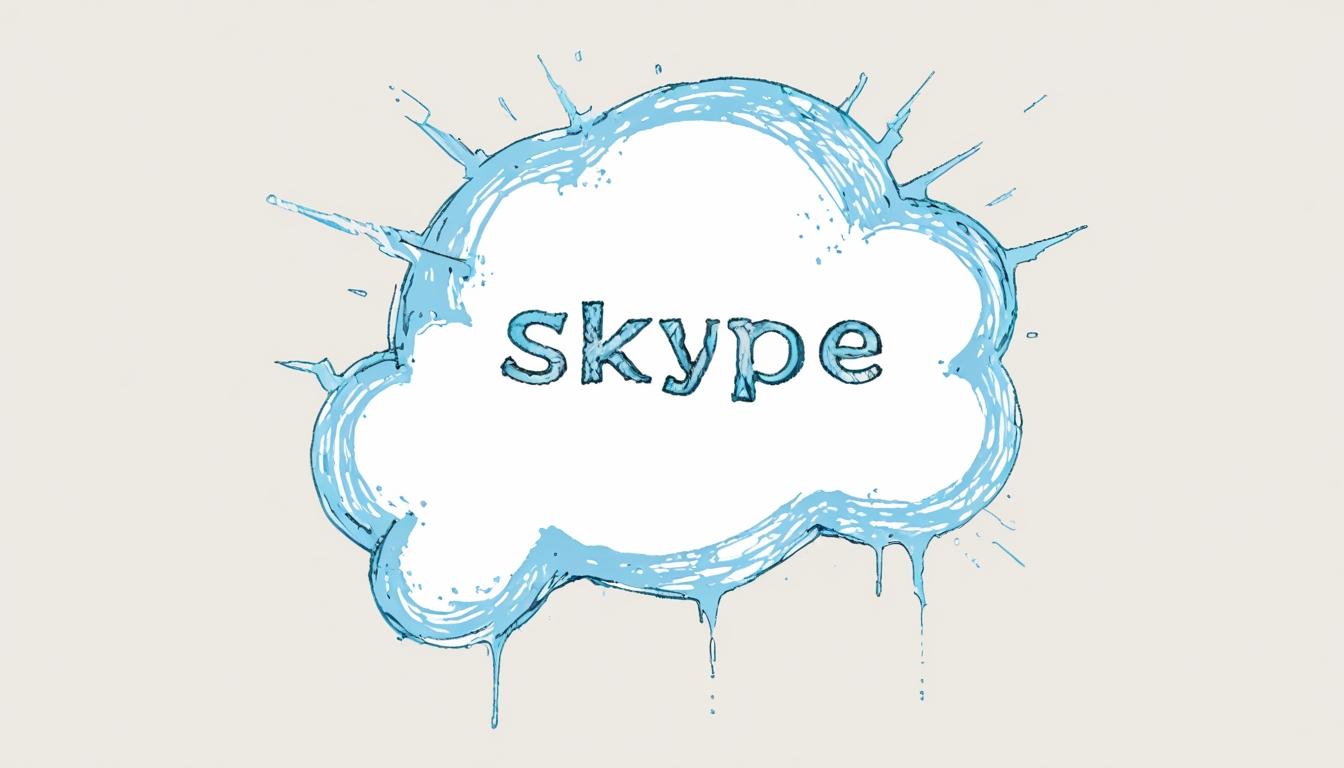Skype, once a pioneer in the realm of video communication, is on the cusp of extinction with its discontinuation set for May 2025. The significance of Skype in transforming personal and professional communication cannot be overstated—what began as a novel idea in 2003 evolved into a mainstream platform that allowed users to engage in face-to-face conversations without the exorbitant costs of traditional phone services. However, this once-revered application now finds itself overshadowed and ultimately surpassed by competitors like Zoom and WhatsApp, as the landscape of video conferencing has dramatically shifted.
The trajectory of Skype's decline can be traced back to its acquisition by Microsoft in 2011. This multi-billion dollar deal infused Skype with capital and users but also tethered it to a corporate structure that has been historically disinterested in fostering innovative trajectories outside its immediate product portfolio. Microsoft’s drive to promote Teams ultimately became a double-edged sword. While Teams has gained traction for its integration with Microsoft's suite of productivity tools, Skype has been relegated to a secondary role, suffering from a myriad of neglect and feature bloat. From 2016 to 2023, the user base plummeted from around 300 million to a mere 36 million, indicating a stark loss of relevance in the face of evolving user needs and expectations.
The COVID-19 pandemic served as a catalyst that highlighted Skype’s limitations. As remote work became the norm, the functionality of video conferencing platforms was put to the test. Users demanded straightforward, reliable solutions that Skype was ill-equipped to offer due to its ageing software architecture and complex user interface, which only muddled the experience. Zoom, which entered the market in the same year as Microsoft’s acquisition of Skype, emerged not only as a competitor but as the go-to choice for millions seeking efficiency and user-friendliness during lockdowns. With its ability to support up to 100 participants in a seamless environment, users gravitated towards Zoom's streamlined experience, wilfully overlooking Skype's existence.
Compounding Skype's struggles were issues surrounding its outdated structure. Unlike newer platforms that embraced modern, interlinked accounts, Skype's retention of its historical connection to phone numbers was increasingly irrelevant in a digital world where simplicity and integration are prized. This lack of adaptability ultimately alienated a generation of users who desired a more cohesive and secure communication experience.
Microsoft's eventual pivot to Teams further exacerbated Skype’s decline, as resources were diverted to enhance a platform that many viewed as less effective for casual video chatting. The software giant's hesitance to overhaul Skype in a meaningful way resulted in a perception of stagnation, where users felt they were using a service that had lost touch with their needs. While Teams found its footing within corporate environments, Skype's gradual loss of features, combined with a complicated interface and bloated settings, resulted in a frustrating experience that deterred longtime users.
Despite such shortcomings, Skype's legacy is not entirely tarnished. It played a pivotal role in the evolution of online communication and laid the groundwork for subsequent platforms. However, as competitors like Zoom command 53% of the UK market and Facebook Messenger provides richly integrated experiences for casual users, Skype's influence has dwindled. In a space that demands relentless innovation, the arrival of Zoom and its emphasis on user experience effectively marked the beginning of the end for Microsoft’s first child of video conferencing.
As the tech world prepares for Skype’s transition into oblivion, users are left seeking alternatives. WhatsApp and Zoom are currently at the forefront, garnering favour for their ease of use, security features like end-to-end encryption, and robust functions that cater to both personal and professional needs. The decision to migrate to Microsoft Teams after Skype’s shutdown may be a necessity for some, but the wave of discontent among users suggests that many are looking forward to embracing the platforms that prioritise their changing communication requirements.
With Skype being poised to retire soon, it serves as a lesson in the perils of neglecting user needs in an industry that thrives on evolution. For all the innovation that propelled it to success, the story of Skype stands as a cautionary tale of what can happen when a once-triumphant platform loses its way.
Reference Map
- Paragraphs 1-2: [1], [2], [4]
- Paragraphs 3-4: [1], [2], [5]
- Paragraphs 5-6: [1], [2], [7]
- Paragraphs 7-8: [2], [3], [6]
- Paragraph 9: [1], [2], [3], [7]
Source: Noah Wire Services
